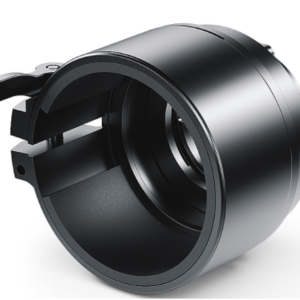Night vision cameras perform differently under different circumstances. Whether you’re learning to use your thermal imaging camera or you’re an expert, you’ve probably heard of the word “focus first.” This means that all the settings can be properly adjusted but focus is the most important factor in improving the accuracy of your thermal camera.
You need to focus properly for both temperature accuracy and image quality. A blurry image can disguise a crucial temperature anomaly in your equipment. When you have an out-of-focus image, it can produce a temperature measurement that is off. The significant temperature difference could lead to a bad conclusion.
Emissivity vs. reflected light
Focusing on a target with your camera presents more challenges compared with a visual light camera. When using a visual image camera, you can take advantage of the reflected light that produces sharp contrast between objects. You should deal with the energy that is emitted from a surface when dealing with a thermal imaging camera. It is unusual to have a surface with sharp temperature differences near each other.
As heat energy moves through liquids, solids and gasses, crisp lines between objects may disappear and make focus a huge challenge. You can improve your focus by turning your camera to grayscale. Remember, the human eye can focus more easily in grayscale than in other color palettes. You should also hold the camera still to improve your focus.
Choose a focus type that matches your applications
When choosing a focus system for your night vision equipment, you should ensure it matches your applications. When choosing a thermal imaging camera, you can choose from different types of focus systems: autofocus, manual focus and fixed focus.
Fixed focus
These offer shoot-and-point technology that focuses on targets at a specific distance. These cameras have low resolution. They are also used to quickly scan an area and find obvious cold and hot spots.
Autofocus
This focus system encompasses a wide range of automatic focus technologies such as multifocal image capture and laser-assisted autofocus. It expedites sharp focusing for both novice and experienced thermographers.
An image that is out of focus affects the accuracy of your results and can also affect your ability to communicate the results effectively to your maintenance manager or your client.
Optics
The efficiency of transmission of infrared energy to the detector is determined by the materials used to make the lenses of a thermal imaging camera. This means it impacts the quality of your image directly. Losing a lot of infrared energy through optics can cause your image to lose details.
Detector resolution
The detector resolution or the number of detector pixels on your camera is an important factor in the quality of your thermal images. Each pixel detects the temperature of its area of the object. The more pixels focus on the image, the more detail you can get in your image and this leads to accurate measurement. So you can use night vision cameras with better detector resolution to improve quality.
